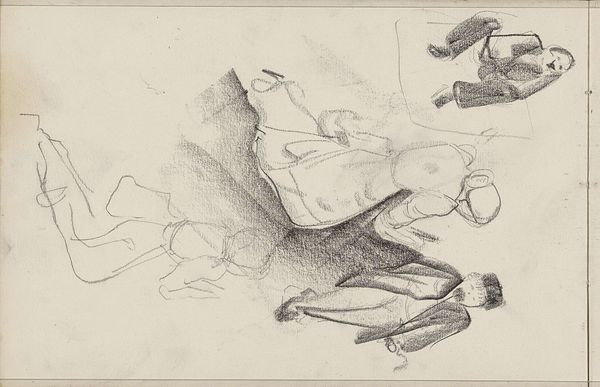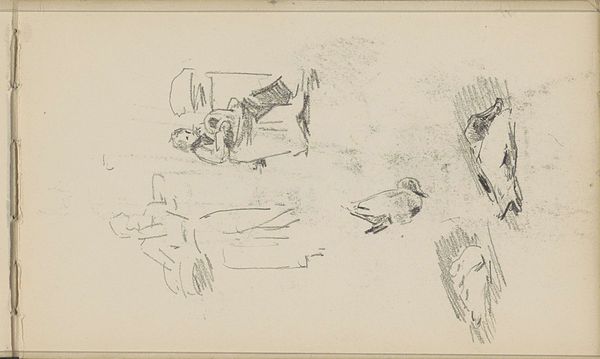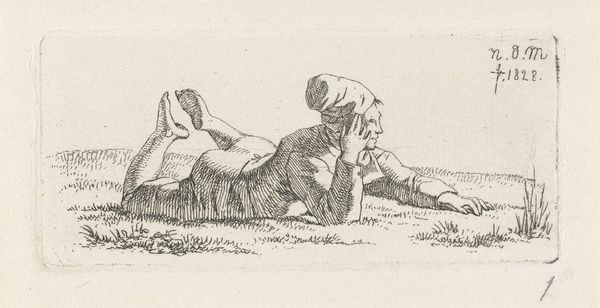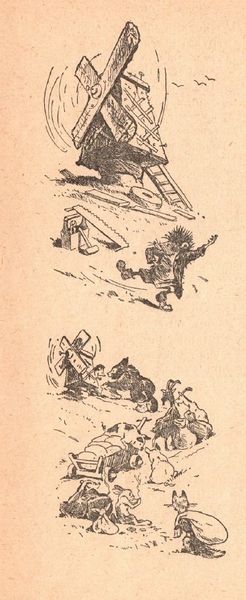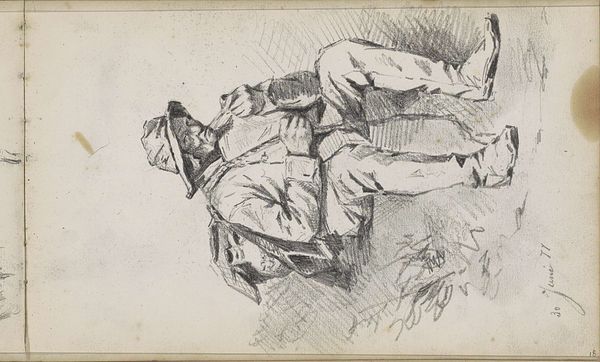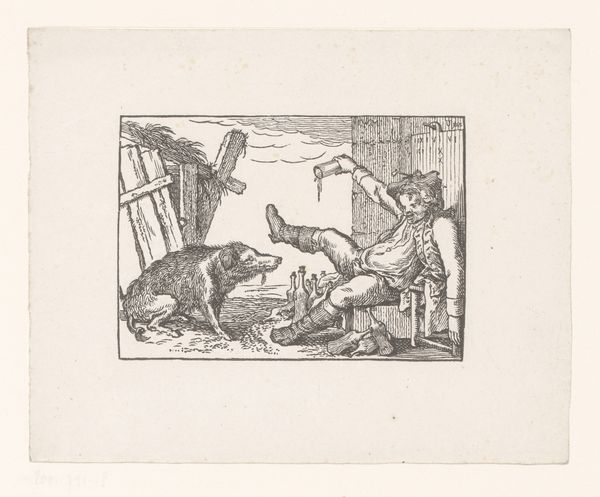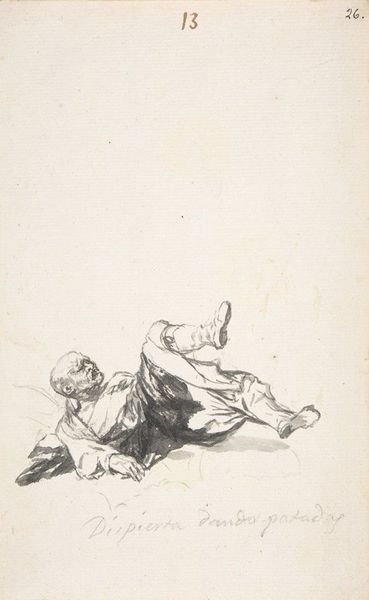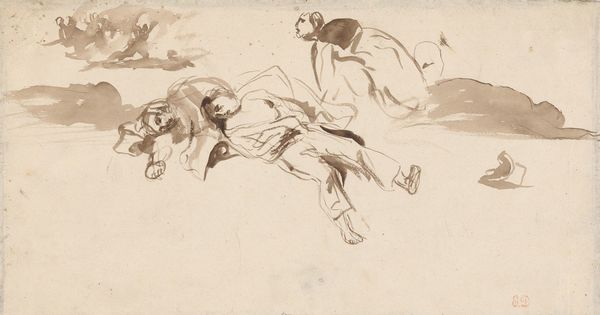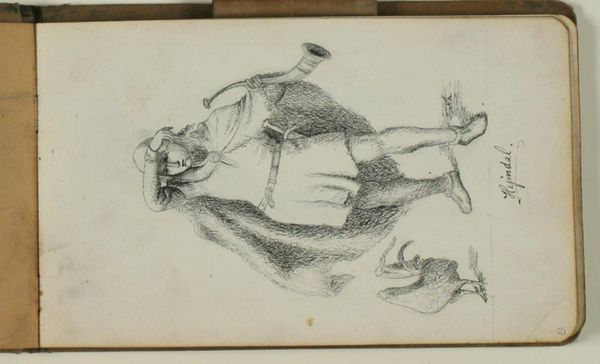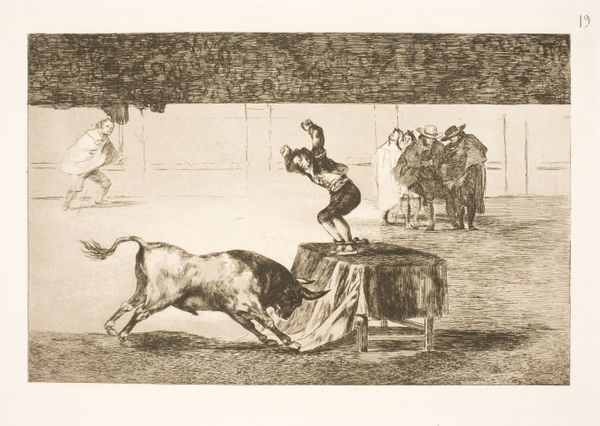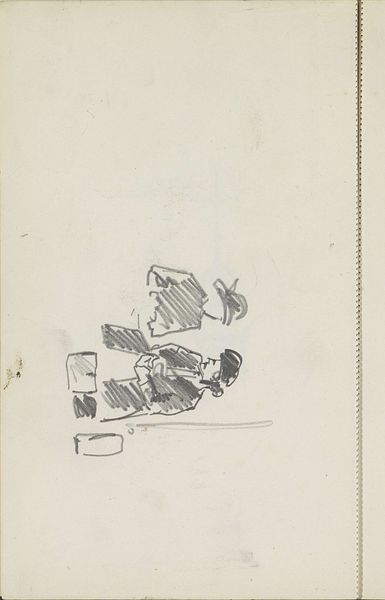
Man en een vrouw op een daklijst omvergelopen door een hond die twee katten najaagt 1836 - 1912
0:00
0:00
Dimensions: height 89 mm, width 111 mm
Copyright: Rijks Museum: Open Domain
Curator: This quirky pen drawing, housed here at the Rijksmuseum, is attributed to Isaac Weissenbruch, though the exact year is unconfirmed, placing it somewhere between 1836 and 1912. The title translates to “Man and woman on a cornice knocked over by a dog chasing two cats.” Editor: My goodness, what a scene! The entire composition is one chaotic tumble. The lines are so light, yet capture all this dynamic movement, a whirlwind of limbs and fur and tails... Curator: Exactly! And what might seem like a simple genre scene, reflects the social and architectural changes happening in late 19th century Netherlands. The growing density of urban spaces likely informs this comedic rooftop drama, a reflection on how quickly private lives become public spectacle. Editor: It's interesting you say that, as it also showcases how the materials used affect the feeling of the sketch. The swift strokes of pen – most likely with a quill giving us these lovely, fluid lines – make it feel like a quick, almost instantaneous capturing of this absurd event. Implying such fleeting moments of panic happened regularly. Curator: Quite possibly! Weissenbruch was known for his realist depictions of Dutch life, but always tinged with an element of humor. There's also a subtle critique here; note how the humans are reduced to awkward shapes amidst the chaos, almost equating them to the level of animals. A statement about societal decorum, perhaps? Editor: Maybe. Or simply just pointing out the ridiculousness of people trying to maintain appearances, of even existing in elevated situations. Consider how the ink almost bleeds in certain areas. Such imperfection speaks to a raw materiality of everyday life. The rooftop could even be a metaphor of being an outcast—forced to exist among stray animals. Curator: An intriguing point of view. Certainly opens up avenues for reinterpreting genre scenes through materiality and spatial conditions. Editor: I like seeing art outside traditional high and low boundaries. Thanks for sharing it, I'll definitely chew on the imagery as a metaphor.
Comments
No comments
Be the first to comment and join the conversation on the ultimate creative platform.

